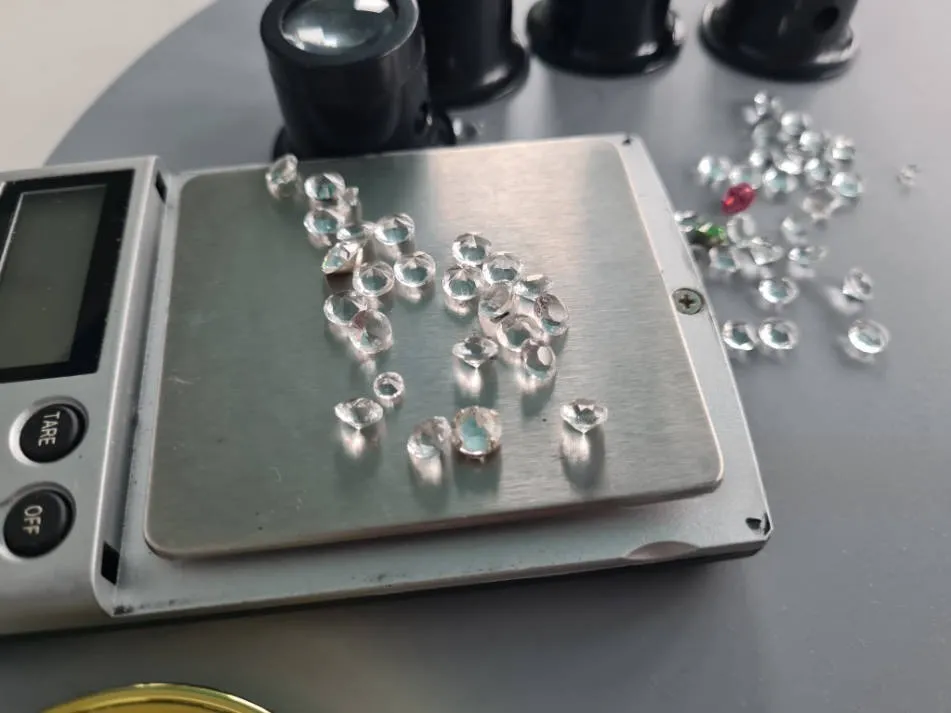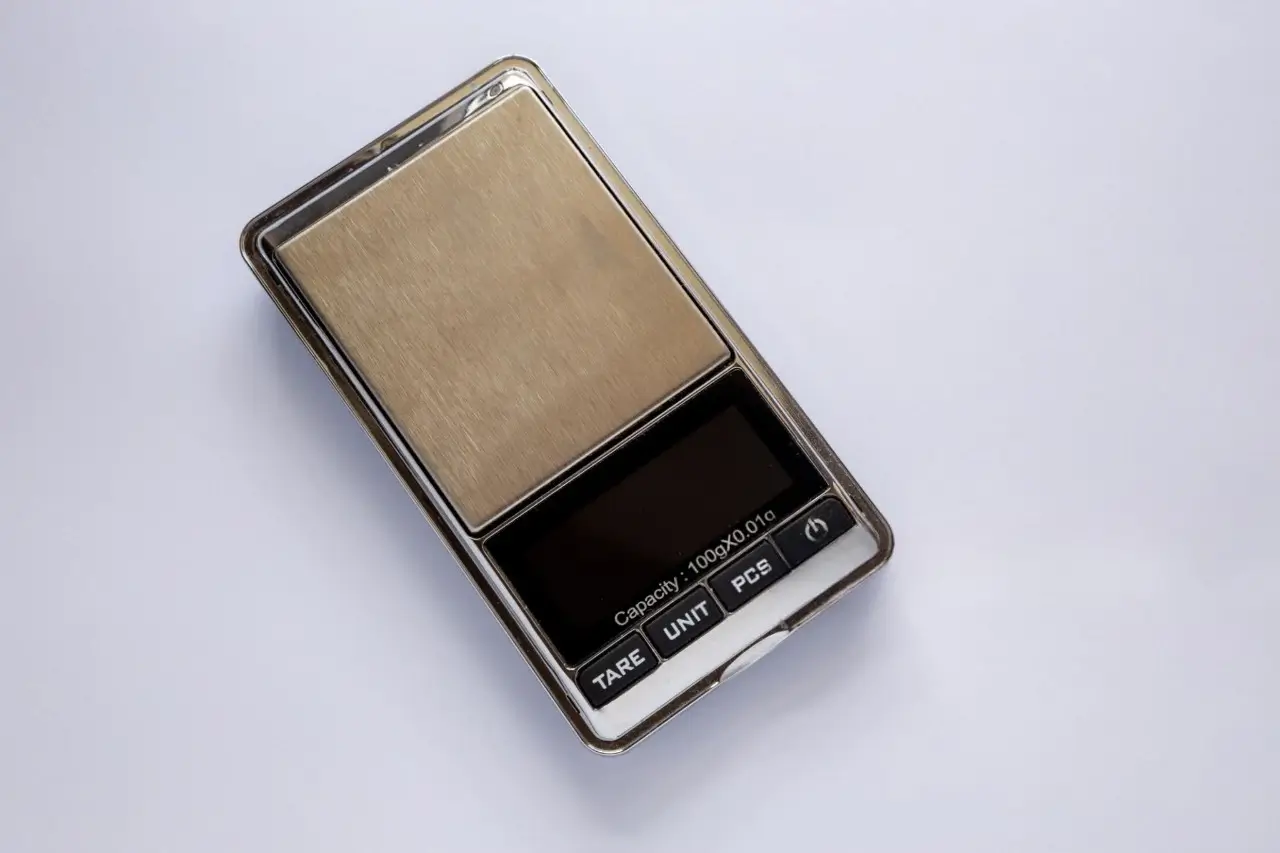Selecting the perfect jewelry scale is more than just picking a tool—it’s about ensuring precision, reliability, and confidence in your work. Whether you’re a professional jeweler, a hobbyist, or someone weighing precious metals and gemstones, the right scale is crucial. With countless options available, understanding your specific needs will guide you to a smart choice.

I. Know Your Needs: What Are You Weighing?
Before browsing, clarify your weighing tasks to narrow down your options.
1.1 Purpose: What Materials Are You Measuring?
The materials you work with determine the scale’s required precision.
- Diamonds and Precious Gemstones: These demand ultra-high precision, often to 0.001g (milligrams) or even 0.0001g, as tiny weight differences can significantly affect value.
- Gold and Silver: Precision matters, especially for small scraps or findings, but scales measuring in grams or pennyweights often suffice for larger quantities.
- Other Materials (e.g., Beads, Craft Components): For less valuable items, a scale with 0.1g accuracy may balance cost and functionality.
1.2 Weight Range: From Light to Heavy
Consider the lightest and heaviest items you’ll weigh.
- Milligrams vs. Grams: For tiny diamonds, a milligram-capable scale is essential. For larger gold bars or silver pieces, choose a scale with a capacity in grams or kilograms, ensuring it exceeds your maximum needs.
1.3 Accuracy: How Precise Do You Need to Be?
Accuracy, or readability, refers to the smallest measurable increment.
- High-Value Items (0.001g to 0.0001g): For diamonds, lab work, or small amounts of high-purity gold, a milligram or sub-milligram scale is critical.
- General Jewelry Use (0.01g to 0.1g): This level suits most jewelry components, like settings, clasps, or larger gemstones.
1.4 Frequency of Use: Daily or Occasional?
How often you use the scale affects the features and durability you need.
- Daily Professional Use: If the scale is central to your work, invest in a sturdy model with features like internal calibration and robust construction for long-term reliability.
- Occasional Use: For infrequent tasks, a basic, budget-friendly model may suffice.
1.5 Portability: Will You Move It?
Think about where you’ll use the scale.
- Mobile Use: For trade shows, on-site appraisals, or multi-location work, a compact, battery-powered pocket scale is ideal.
- Stationary Use: For a fixed workbench or lab, a larger, plug-in precision balance offers stability and power consistency.
II. Key Features to Prioritize
Once you know your needs, evaluate scales based on these critical features.
2.1 Capacity and Readability: The Perfect Match
Ensure the scale’s capacity and readability align with your tasks. A 100g capacity with 0.01g readability differs vastly from a 20g capacity with 0.001g readability. Match these to your needs.
2.2 Units of Measurement: Speak Your Language
Jewelry scales should offer relevant units:
- Grams (g): Universal and widely used.
- Carats (ct): Vital for gemstones (1 carat = 0.2 grams).
- Ounces (oz) and Troy Ounces (ozt): Troy ounces are standard for precious metals (1 ozt = 31.1035 grams).
- Grains (gn): Used in niche or historical contexts.
- Pennyweights (dwt): Common for gold in the U.S. (1 dwt = 1.555 grams).
Choose a scale with the units you use most.
2.3 Calibration: Keeping It Accurate
Calibration ensures consistent measurements.
- External Calibration: Uses a known weight (often sold separately) for manual adjustment. It’s precise but requires effort.
- Internal Calibration: Found in higher-end models, this auto-calibrates with a button press, minimizing errors.
Regular calibration is essential for reliable results, regardless of the method.
2.4 Tare Function: Zero Out Containers
The tare function lets you place a container on the scale, reset to zero, and weigh only the item’s net weight. This is a must-have for jewelry work.
2.5 Power Source: Convenience Matters
- Battery-Operated: Ideal for portability, especially in locations without outlets. Look for clear battery life indicators.
- AC Adapter: Best for stationary use, offering uninterrupted power. Some scales provide both options for flexibility.
2.6 Pan Size: Fit Your Items
The weighing pan must accommodate your items. A small pan works for a single diamond but may not suit a large gold chain or multiple pieces.
2.7 Draft Shield: Guard Against Errors
For scales with 0.001g or finer readability, a draft shield (a clear enclosure around the pan) is vital. It blocks air currents from windows or AC, ensuring accurate readings.
III. Types of Jewelry Scales and Their Uses
Different scales suit different tasks. Here’s a breakdown.
3.1 Pocket Scales / Mini Scales: Portable Convenience
- Description: Compact, battery-powered, and easy to carry.
- Accuracy: 0.01g to 0.1g.
- Uses: Great for quick checks of rough weights or small craft materials. Not ideal for high-value gemstone valuation.
3.2 Precision Balances (Gemstone Scales): Pro-Level Accuracy
- Description: Larger, stable, often with a draft shield for precision.
- Accuracy: 0.001g to 0.0001g.
- Uses: Perfect for diamonds, gemstones, or small quantities of gold and platinum. Essential for gemologists and high-end jewelers.
3.3 Laboratory Scales: Top-Tier Precision
- Description: Robust, high-capacity, with advanced features like data logging.
- Accuracy: 0.01g to 0.00001g (analytical balances).
- Uses: Suited for lab analysis or compounding, but often overkill for standard jewelry tasks unless precision is critical.
3.4 Gold Scales: Built for Precious Metals
- Description: Higher capacity, emphasizing units like pennyweights and troy ounces.
- Accuracy: 0.01g to 0.1g.
- Uses: Ideal for scrap gold buyers, sellers, or jewelers handling larger precious metal quantities.
IV. Budget and Where to Buy
Balancing cost with quality is key, but don’t sacrifice accuracy for savings.
4.1 Price Ranges: Quality Meets Cost
- Entry-Level (Under $50): Basic pocket or gram scales for rough measurements. Accuracy is limited, suitable for casual use.
- Mid-Range ($50–$300): Reliable precision balances with 0.01g to 0.001g accuracy. Features like draft shields and tare functions are common.
- High-End ($300+): Professional-grade scales with internal calibration and durability for demanding tasks.
A cheap, inaccurate scale can cost more in errors over time.
4.2 Brands and Reputation: Choose Wisely
Opt for trusted brands with strong reviews and a history of quality. User feedback offers real-world insights into performance.
4.3 Where to Buy: Reliable Sources
- Jewelry Supply Stores: Online or physical stores offer curated, high-quality scales tailored for jewelers.
- Laboratory Equipment Suppliers: Best for high-precision analytical balances.
- Online Retailers: Convenient but verify seller ratings and specs, especially for precise scales.
4.4 Warranty and Support: Protect Your Investment
A solid warranty and accessible customer support ensure peace of mind. Check the warranty’s coverage and duration, and confirm the manufacturer offers reliable service.
VI. Maintenance and Best Practices
Proper care keeps your scale accurate and extends its life.
5.1 Calibration: Stay Precise
- Regular Calibration: Calibrate often, especially after moving the scale, temperature changes, or inconsistent readings. For precision scales, calibrate daily or before critical tasks.
- Certified Weights: Use accurate calibration weights for external calibration.
- Follow Instructions: Refer to the manual for specific steps.
5.2 Cleaning and Care: Keep It Spotless
- Clean Regularly: Dust or debris can skew readings. Use a soft brush or cloth, avoiding harsh chemicals.
- Handle Gently: Avoid dropping or rough handling to protect delicate components.
- Store Safely: Keep the scale in a dry, clean place, ideally in a protective case.
5.3 Environmental Factors: Control the Setting
- Temperature: Operate in a stable temperature to avoid skewed readings.
- Humidity: High humidity can affect electronics.
- Vibrations: Place the scale on a level, vibration-free surface, away from vents or windows.
5.4 Proper Handling: Be Deliberate
- Gentle Placement: Place items carefully on the pan’s center to avoid shocking the sensor.
- Avoid Overloading: Never exceed the scale’s capacity to prevent damage.
5.5 Troubleshooting: Fix Common Issues
- Unstable Readings: Check for drafts, vibrations, or uneven surfaces, then recalibrate.
- Calibration Errors: Verify the correct weight and procedure. Remove obstructions.
- Power Issues: Check batteries or connections. Consult the manual or support for persistent problems.
Conclusion
Choosing the right jewelry scale is a pivotal decision that enhances the precision and reliability of your work. By assessing your needs, prioritizing key features, exploring scale types, setting a realistic budget, and maintaining your scale properly, you’ll find a tool that delivers accurate results for years. The best scale empowers you to work with confidence, ensuring every measurement counts.



